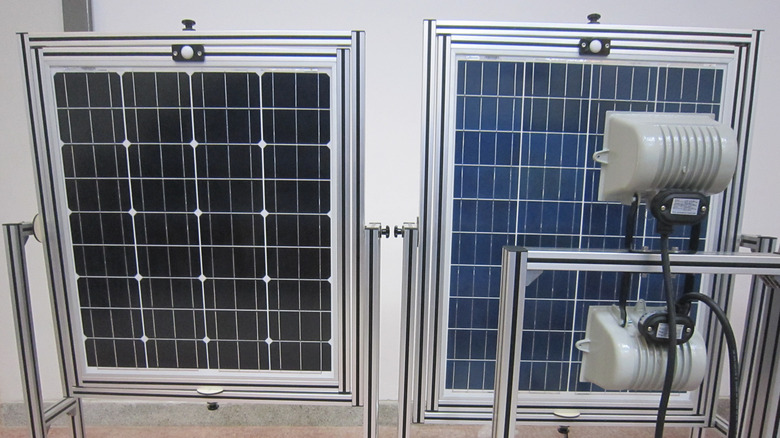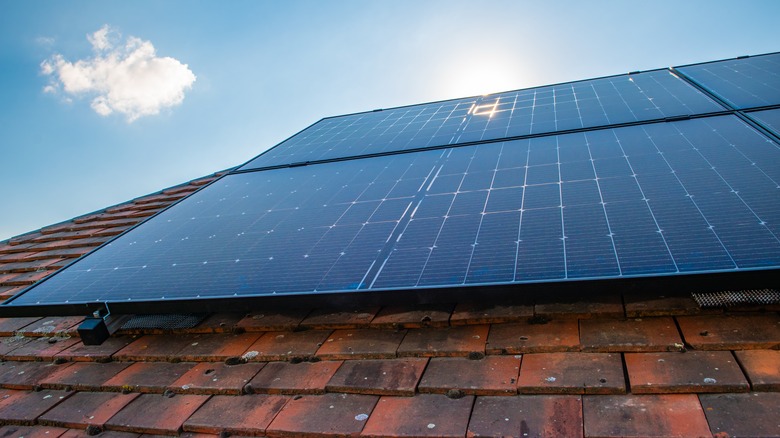Monocrystalline Vs. Polycrystalline Solar Panels: What There Is To Know
When opting to use solar panels as a power source for your home or business, the choices tend to revolve around where to place them and how big they should be. But there's at least one more decision to be made: whether to go with monocrystalline solar panels or polycrystalline solar panels. There's really no wrong decision here, as both types perform the basic function of a solar panel by capturing energy from the sun and turning it into electricity. Both are also made of silicon and widely available from solar panel manufacturers, according to Energy Sage. So what's the main difference?
It comes down to the material used and the related efficiency. Monocrystalline solar panels are typically made from a single silicon crystal, contain black-colored solar cells, and usually come with a higher efficiency rating to go along with the higher price. Polycrystalline solar panels are produced with multiple silicon fragments melted together, feature blue-colored cells, and tend to be a little less efficient and more affordable.
How each are produced and what that means
The manner in which they're produced ultimately impacts usage and installment. According to Forbes, monocrystalline solar panels come from a single crystal of silicon grown specifically for solar panel usage, and takes the form of a log-like piece called an ingot, sliced into octagon-shaped sheets that are aligned in a panel, like "like cookies on a baking sheet." This process enables monocrystalline solar panels to have better heat tolerance, require less space and sunlight, and have an efficiency range of between 15% to 20%, and even up to 50% in newer, more advanced models.
In the early stages, the core difference is that polycrystalline solar panels are not taken from a single ingot, but come from cooled fragments of silicon crystals which are melted and sliced for placement in a panel. It's a less drawn out and cheaper process, and the reason these cells become less efficient is because "the melted fragments of silicon afford less room for the electrons to move around," per Forbes. That efficiency rating tends to be between 13% and 16%, and the cells tend to need more space and sunlight.
While these differences can add up over time in terms of costs and electricity harnessed, choosing one over the other often relates to the space available and the amount of sunlight streaming down — though it could also just come down to which matches the color of your roof.

